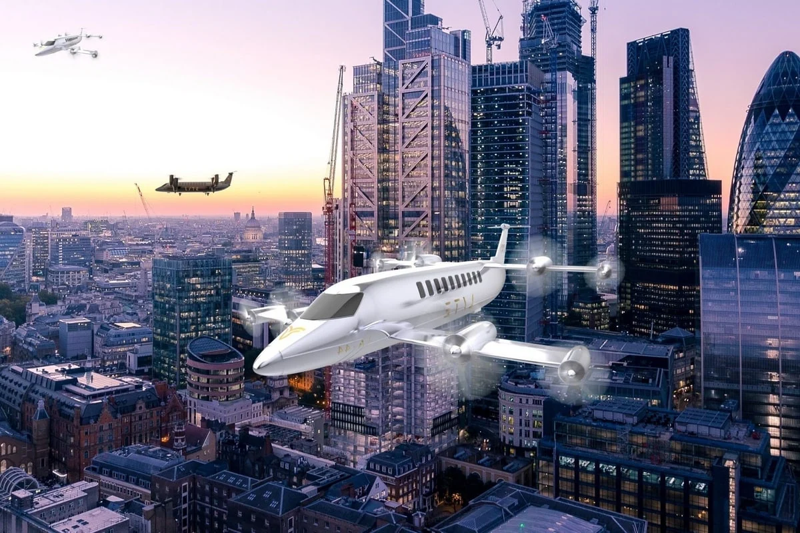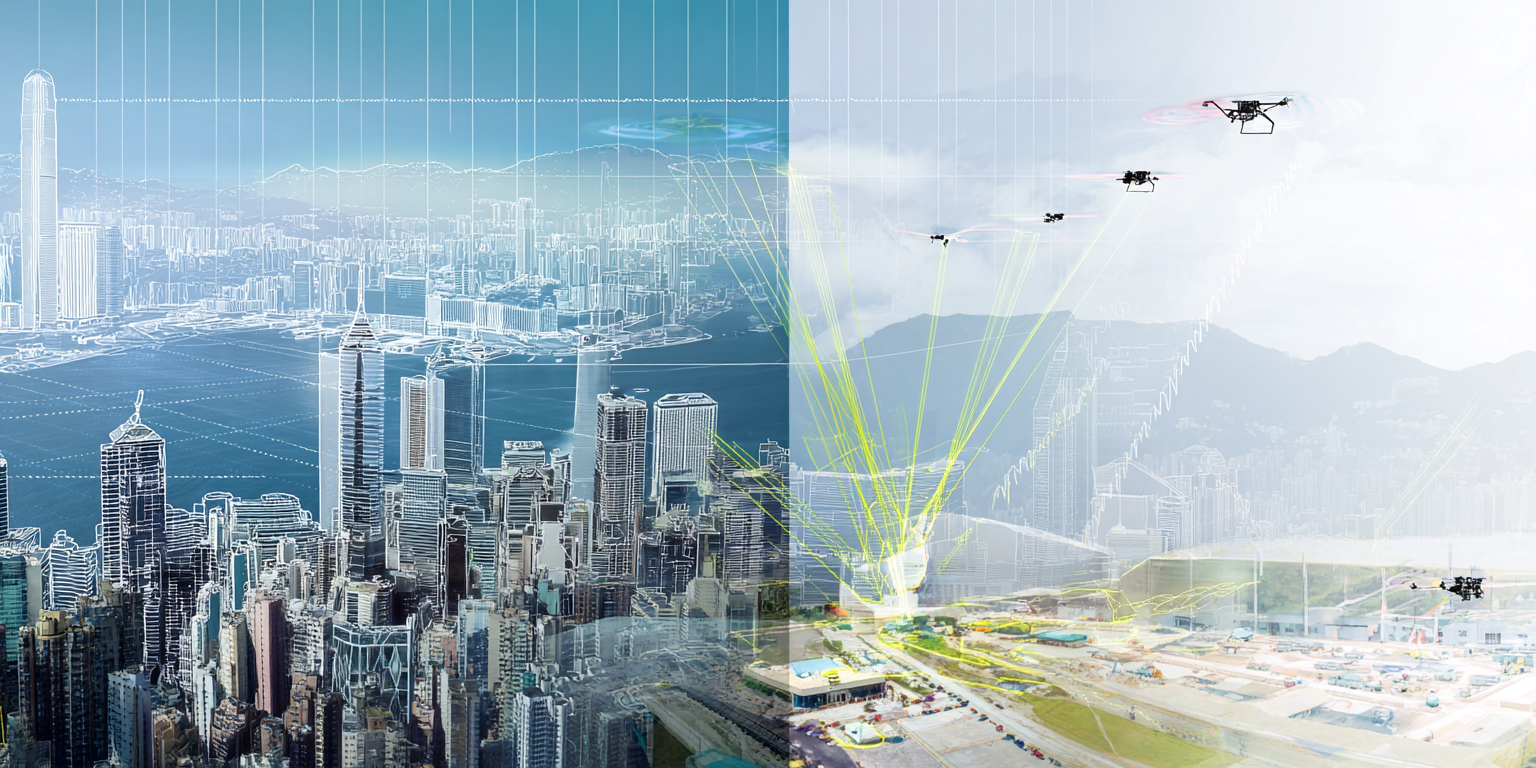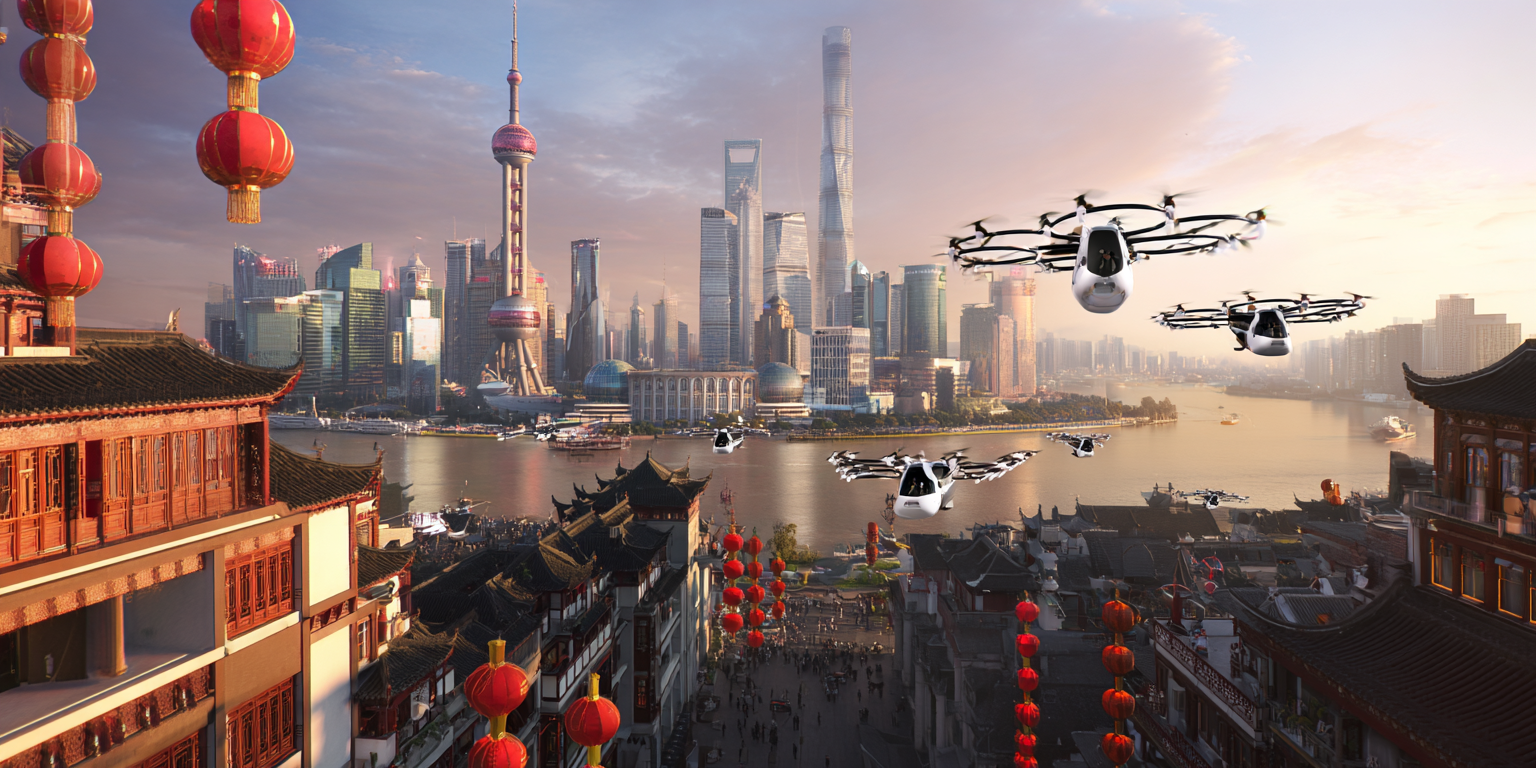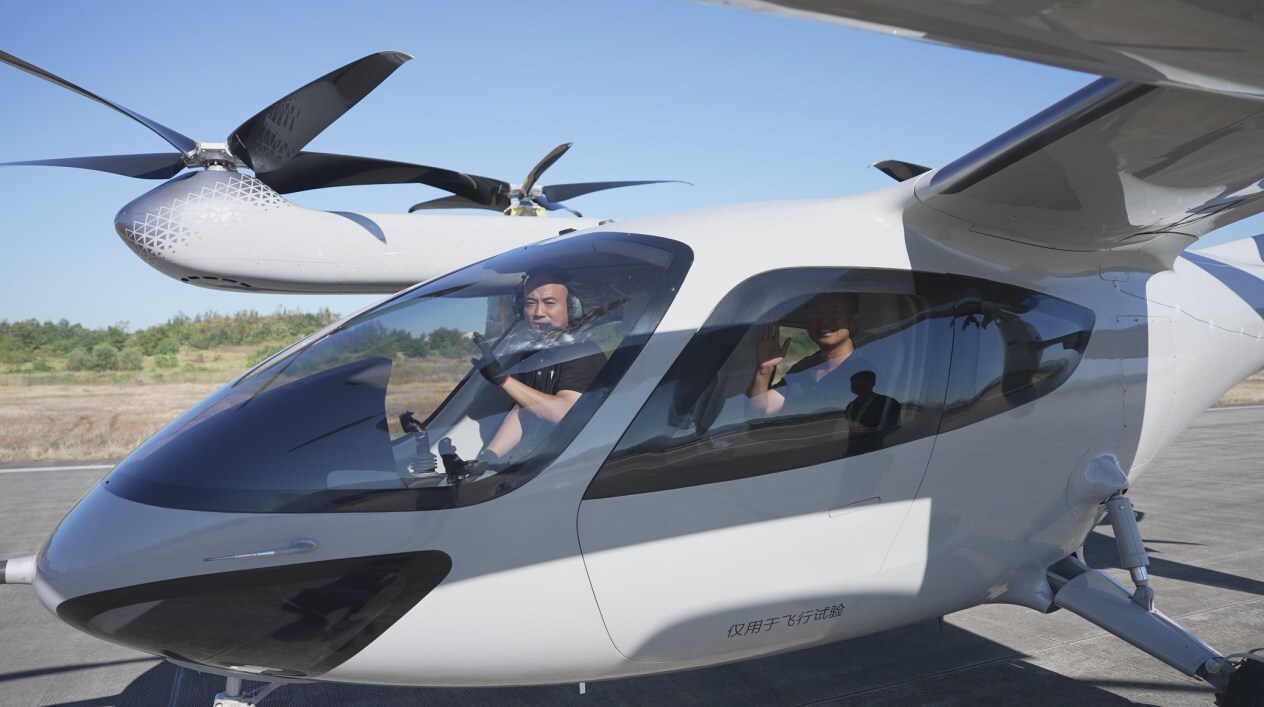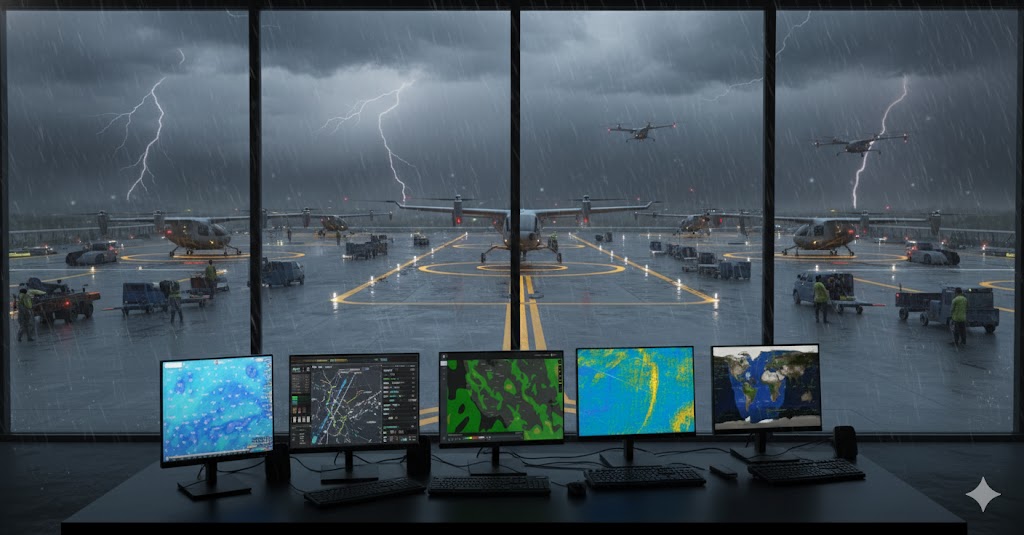A groundbreaking aircraft is poised to remake regional transportation in the rapidly evolving aviation landscape. The Lyte Aviation LA-44 SkyBus, a 40-seat electric Vertical Take-Off and Landing (eVTOL) aircraft, represents a bold step towards sustainable, efficient, and flexible air travel. By combining innovative design with cutting-edge hydrogen-electric propulsion, the LA-44 aims to bridge the gap between traditional commuter aircraft and the emerging world of urban air mobility.
A New Player in the Sky
Founded in 2020, UK-based Lyte Aviation has quickly established itself as a pioneer in the eVTOL sector. The company's flagship project, the LA-44 SkyBus, stands out in an industry dominated by smaller, battery-powered aircraft designed for short urban hops. With its 40-passenger capacity, the LA-44 targets the regional aviation market, offering a compelling alternative to ground transportation and conventional regional airliners.
Hydrogen-Electric Propulsion: The Game Changer
At the heart of the LA-44's innovative design is its hydrogen-electric fuel cell propulsion system, developed in partnership with France-based H3 Dynamics. With over 15 years of experience developing hydrogen technologies in the aerospace and defense sector.
Additionally, H3 Dynamics will work with LYTE to ensure hydrogen fuel is available for the aircraft at airport destinations by supplying self-contained hydrogen electrolyzer systems that can produce green hydrogen on demand.
The partnership aims to address the limited flight times of battery-powered eVTOLs by transitioning to hydrogen fuel cells, which can provide significantly longer range, as demonstrated by Joby Aviation's recent 523-mile flight using hydrogen power.
This choice of hydrogen power source offers several substantial advantages over both traditional fossil fuels and battery-electric systems:
- Extended Range: The LA-44 boasts a range of over 620 miles (1,000 km), significantly outperforming battery-powered eVTOLs and competing with many turboprop regional airliners.
- Zero Emissions: The LA-44 uses hydrogen fuel cells and produces only water vapor as a byproduct, making it a truly zero-emission aircraft.
- Rapid Refueling: Unlike battery-powered aircraft that require lengthy charging times, hydrogen tanks can be refilled quickly, improving operational efficiency.
- Higher Energy Density: Hydrogen fuel cells offer 3-5 times the energy density of current battery technology, enabling longer flights without sacrificing payload capacity.
Hydrogen fuel cells provide a clean, energy-dense power source that can significantly extend the range and operational flexibility of eVTOL aircraft compared to current battery technology. This makes hydrogen fuel cells an attractive solution for enabling viable commercial eVTOL services. The fuel cells work as follows:
- Hydrogen stored on the aircraft flows into the fuel cell system. It reacts with a catalyst at the anode and splits into protons and electrons.
- Protons pass through an electrolyte membrane to the cathode, where electrons flow out to generate an electric current that powers the electric motors.
- At the cathode, the protons combine with oxygen from the air to produce water vapor and heat, the only emissions.
- The fuel cells are stacked to scale up power. As long as hydrogen fuel is supplied, they passively generate electricity without moving parts.
VTOL Capability: Redefining Operational Flexibility
One of the LA-44's most distinctive features is its Vertical Take-Off and Landing capability. This design choice offers several critical advantages:
- Reduced Infrastructure Requirements: The LA-44 can operate from a 40x40m pad, eliminating the need for long runways and extensive airport infrastructure.
- Access to Remote Areas: The SkyBus's VTOL capability allows it to serve communities and destinations that lack conventional airport facilities.
- Urban Integration: The ability to take off and land vertically makes integrating air travel into urban environments easier, potentially reducing travel times in congested areas.
- Noise Reduction: The electric propulsion system and advanced VTOL technology promise significantly lower noise levels than helicopters and conventional aircraft.
Environmental Impact
By addressing multiple facets of environmental concern—emissions, noise, and energy efficiency—the LA-44 represents a holistic approach to sustainable aviation, positioning itself at the forefront of the industry's efforts to minimize its ecological impact while meeting growing transportation needs. The LA-44's innovative hydrogen-electric propulsion system establishes it as a frontrunner in eco-conscious aviation that features:
Emission-Free Operation: The aircraft emits only water vapor during flight, dramatically lowering its ecological footprint compared to traditional fossil fuel-powered aircraft.
Renewable Fuel Potential: By employing electrolyzers powered by renewable sources such as solar or wind energy, the entire process can be rendered carbon-neutral, from hydrogen production to its consumption in flight.
Acoustic Benefits: The LA-44 boasts quieter operations than conventional aircraft and helicopters. This reduction in noise pollution can significantly improve the quality of life for communities near airports, heliports, and flight paths.
Operational Efficiency: The aircraft's capability to fly direct, point-to-point routes without extensive runway infrastructure offers potential energy savings in many scenarios.
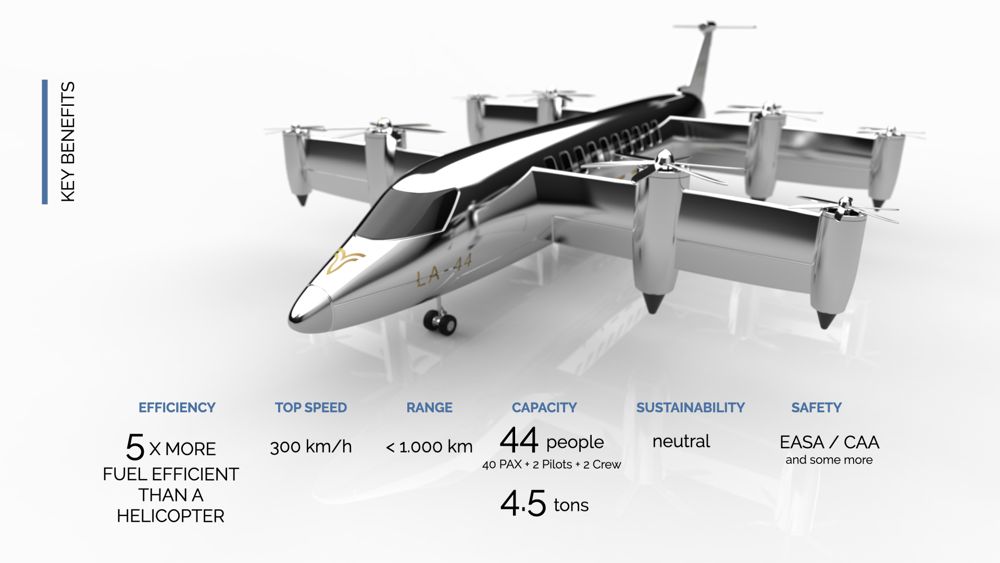
Performance and Efficiency
While detailed performance specifications are still emerging, the LA-44 SkyBus is designed to compete with and potentially outperform traditional regional aircraft in several key areas:
Speed: With a reported top speed of 186 mph (300 km/h), the LA-44 is slower than some turboprop competitors like the Antonov An-140 (533 km/h). However, its point-to-point travel capabilities may offset this difference in many scenarios.
Lower Fuel and Maintenance Costs: Hydrogen-electric engines could offer 40% lower fuel and maintenance costs than turbine engines. The hourly maintenance costs could also be 75% lower. As hydrogen production scales up, the costs are expected to decline further.
Efficiency: Lyte Aviation claims the LA-44 will be five times more fuel-efficient than helicopters, offering significant operational cost savings.
Payload: Besides the 40-seat passenger version, Lyte is developing a SkyTruck cargo variant with a 4.5-ton payload capacity, demonstrating the platform's versatility.
Cost Competitive with Jet Fuel by 2035: A report by Transport & Environment found that by 2035, operating hydrogen-powered aircraft could be only 8% more expensive than jet fuel. However, with adequate taxes on fossil jet fuel and carbon pricing, hydrogen planes could become 2% cheaper to operate than jet fuel planes by 2035.
Market Positioning and Potential Impact
Most other eVTOL aircraft in development are smaller 2-5 seat designs using batteries, so the 40-seat hydrogen-powered LA-44 is fairly unique. The LA-44 SkyBus is positioned to disrupt several segments of the transportation industry:
Regional Aviation: With its 40-seat capacity, the LA-44 competes with established regional airliners like the ATR 42 and Antonov An-140. Its VTOL capabilities and clean propulsion system offer unique advantages in this space.
Urban Air Mobility: While larger than typical "air taxi" concepts, the LA-44 could serve as a high-capacity shuttle for major urban corridors, potentially alleviating ground congestion.
Remote and Underserved Communities: The aircraft's range and VTOL capabilities make it well-suited for connecting isolated areas that lack conventional airport infrastructure.
Cargo Transport: The SkyTruck variant could revolutionize middle-mile logistics, offering a flexible and environmentally friendly alternative to trucks and conventional cargo aircraft.
Comparative Advantages:
When compared to its closest competitors in the regional aviation market, the LA-44 SkyBus offers several unique advantages:
Versus Turboprops (e.g., ATR 42, Antonov An-140):
- VTOL capability eliminates runway requirements
- Zero-emission operation
- Potentially lower operating costs due to electric propulsion
- Reduced noise footprint
Versus Smaller eVTOLs:
- Significantly higher passenger capacity
- Extended range suitable for regional travel
- Potential for lower per-passenger operating costs at scale
Versus Ground Transportation:
- Faster point-to-point travel times, especially in congested areas
- Ability to overcome geographical barriers (mountains, bodies of water)
- Reduced infrastructure requirements compared to high-speed rail
Here is a comparison table of the Lyte Aviation LA-44 SkyBus and the most comparable conventional commuter and regional aircraft:
The key takeaway is that the 40-seat Lyte Aviation LA-44 SkyBus targets performance and capacity in the same class as the ATR 42 regional turboprop.
Its 620+ mile range and 186 mph speed are comparable to the ATR 42, though the Antonov An-140 is faster.
Detailed specs on the LA-44's weights, fuel capacity, and service ceiling are still needed to compare it to existing 40-50-seat regional airliners. However, its tilt-wing VTOL design and planned hydrogen-electric propulsion set it apart as an innovative new entrant in this market segment.
An innovative Vision for Regional Aviation:
The LA-44 SkyBus sits at the confluence of several revolutionary trends in aviation: electrification, vertical take-off and landing, and hydrogen propulsion. This unique combination offers the potential for:
- Enhanced operational flexibility, particularly in underserved or geographically challenging regions
- Significant environmental benefits through zero-emission flights
- Improved passenger experiences with reduced noise and potentially lower operating costs
While challenges remain, particularly in areas of regulation and infrastructure development, the LA-44 presents a compelling vision for the future of sustainable regional air travel. As Lyte Aviation transitions from concept to reality, the project will shape discussions around the future of aviation technology, environmental sustainability, and regional connectivity.
The success of the LA-44 could catalyze broader adoption of hydrogen-electric propulsion and VTOL technology in aviation, potentially accelerating the industry's transition towards more sustainable and flexible air transportation solutions. The progress of this ambitious project will be closely watched by industry stakeholders, policymakers, and environmentalists alike in the coming years.


